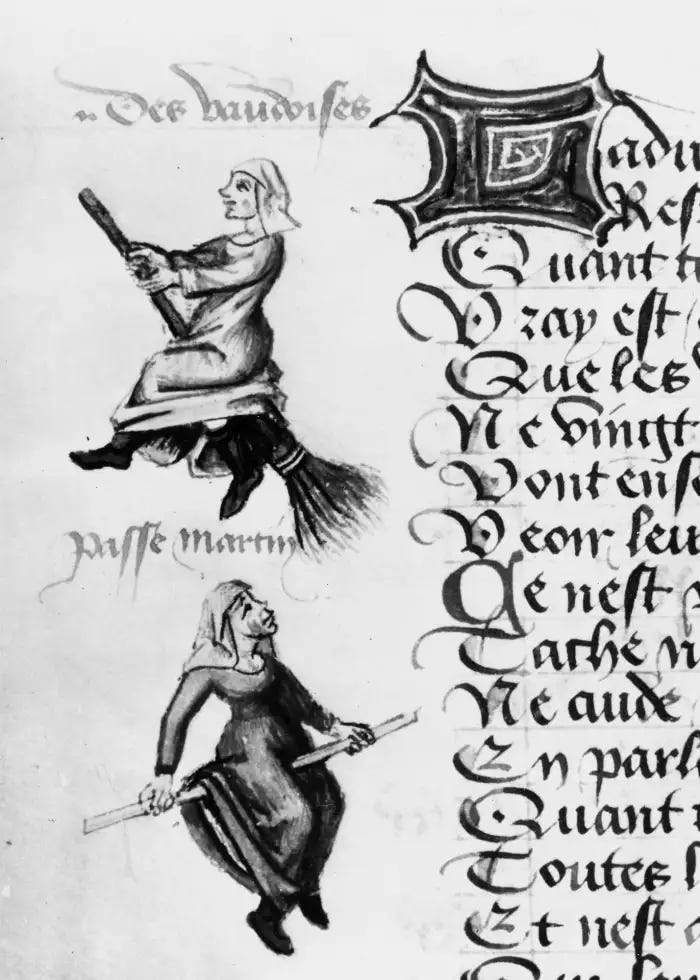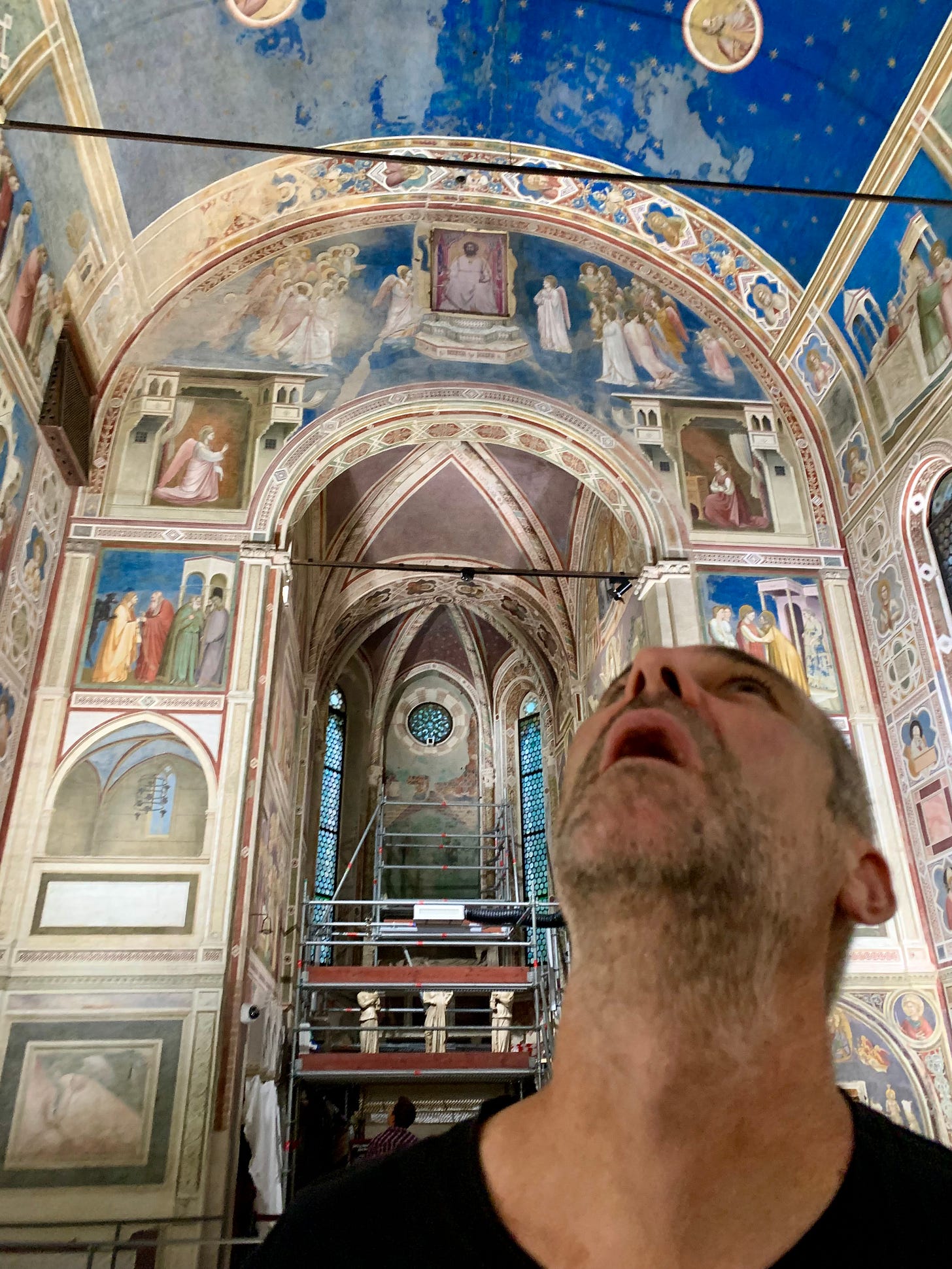I’m going grey. I would be lying if I said that I am totally at peace with this transformation, but I’m attempting a version of acceptance that acknowledges that I am both vain and unwilling to see the process of aging as a war to be fought with myself.
Each morning I make an effort to cheerfully greet the new silver streak in my hair. I’ve named her Bonnie Raitt. I then touch the tiny little talisman of a witch on a broomstick that I wear around my neck; invoking the ancestors, crones and Strega Nonas that came before me. Finally, I hype myself up to walk outside, knowing that I will be silently judged for not dyeing my hair—as is the norm for all older women here—and failing to adhere to the “bella figura” (beautiful figure), an unwritten code of aesthetic and behavioral standards that define beauty, grace and manners in Italy.
This leads me to the historical usage of a humble little plant, Atropa belladonna, as a means of achieving this youthful beauty standard. Belladonna, or, “beautiful woman” in Italian, is also frequently referred to by its other common name: Deadly Nightshade.
In the middle ages Venetian women made eye drops from the juice of the Belladonna berry, also known as the “Devil’s Cherry”, in order to dilate their pupils and widen their eyes— a look considered to be both seductive and attractive. They also applied the juice to their cheeks, attempting to simulate a rosy glow that was associated with youthful good health.
But what’s reaaaaaallly interesting is that when Belladonna is soaked in fat it can made into a salve that can then be ingested safely through mucus membranes. Women were said to apply the salve to broom sticks, clutching said broomsticks between their legs and experiencing hallucinations that included the sensation of flying or astral projecting. Hence the image of ladies on broomsticks flying through the night.
Happy belated Halloween.
Let’s hang out in the middle ages, shall we?
I’d like to tell you a story about a man born in 1276 and plucked from sheep herding obscurity in the hills of Tuscany to a life of notoriety and fame. Legend has it that he spent his days ignoring said sheep and instead whiled away the time rendering loving portraits of his flock with a stick and mud. This is how he was ultimately discovered by the painter Cimabue, who stumbled upon the distracted shepherd and witnessed his perfect drawing of a sheep on the surface of a smooth rock. Cimabue convinced the young boy to follow him to Florence to work as his apprentice. As is often the case, the student’s skills soon surpassed those of his mentor, and Giotto went on to revolutionize painting as we know it.
I spent a lot of energy over the years trying to convince half-asleep teenagers in my Painting I class to care about Giotto and his frescoes. Even after I’d abandoned our traditional art history textbook, exploded the idea of the “canon” and turned the focus of our study towards a more wide reaching and inclusive (ie: non-western, male) survey of painters, I stuck with Giotto. It was a tough sell, but I persisted because I wanted them to get excited about his trippy use of perspective and the otherworldly impact of painting with lapis lazuli and gold leaf. What I didn’t know until recently is that geologists are STILL using his paintings in order to study the complex historical geology of the Apennines and the Scaglia Rossa limestone.
I’d never seen his work in person until a few weeks ago when I led/dragged my family on a pilgrimage to Padova to see Scrovegni Chapel. Giotto did not disappoint. I cried throughout the entire visit.
There is very little written about the personal life of Giotto, but what comes up in accounts by his friend Giovanni Boccaccio (aka: the guy who wrote The Decameron) and his biographer Vasari, is that he was renowned not only for his impact on painting in Europe—he is credited with kickstarting the Renaissance—but also for his kindness, quick wit and notoriously homely face. Boccaccio said that there was, “No uglier man in the city of Florence.”
There is a story of Giotto’s other good friend Dante (yes, that Dante) visiting him in Padova in 1306 while he was painting the frescoes in the Scrovegni Chapel. Apparently Dante asked how a man who painted such beautiful paintings could himself have such ugly children. According to Vasari, Giotto replied, “I make my pictures by day and my babies by night.”
First of all, how many among us would reply to that kind of confidence curdling shade —from one of our closest friends no less—with such a witty and self-effacing retort? And also, wtf Dante and Boccaccio?
Sidenote: After I went down a deep rabbit hole seeking out all things Giotto, I found Pier Paolo Pasolini’s film “Il Decameron” (1971) streaming for free and made the whole family watch it. The film is absolutely gorgeous and totally bonkers. Unfortunately, we had to turn it off at the 45 minute mark before getting to the section on Giotto, after the protagonist Masetto pretends to be a deaf mute and has sex with three different nuns. Whoops! Still, I’m considering it a parenting win because we watched it in Italian without subtitles and Cleo didn’t complain once.
The whole experience of visiting Scrovegni Chapel is an exercise in patiently navigating Italian bureaucracy. You cannot buy the tickets at the museum and the online system is laughably complex, you cannot be late for your time slot or you will not be allowed to enter, and you must wait in a series of different lines. It’s all amusingly chaotic— if you’re in the right frame of mind. If you are not, it can instead become fodder for a scathing review on TripAdvisor or Google Reviews.
Granted there are thousands of glowing reviews, ones that echo our experience of being transported into a magical world of Giotto’s creation, transfixed by the luminosity of the images and the overall feeling of being immersed in an absolute masterpiece. But, it’s waaaaaaay more fun to read to get down into the murk with the naysayers.

So, after returning to our hotel room for the evening I indulged in one of my favorite activities: reading the reviews for UNESCO World Heritage Sites.
Here are a few of my favorites:
Nigel G from the UK: Rude woman at door, refused to listen stating it’s not her problem of what was told at the ticketing counter. 1 star
Talitha: It is old, colorful, and has a good historical story. But it is one single small chapel. Nothing else but the one room to look at. 3 stars
Sardin from Switzerland: Let's be honest: besides having access to great colours/pigments Gioto (sic) was a lousy painter (he could only paint one kind of face he used on men as well as women). 2 stars
It seems that what really pisses people off are the limitations placed on their visit. In order to preserve the frescoes within the fragile ecosystem of the Chapel, restorers decided to control the number of visitors to the chapel as well as the climate of the chapel itself. Apparently the frescoes were starting to deteriorate due to the humidity created from the collective breath of too many visitors, fluctuating temperatures from open windows and doors, and the harmful effects of artificial lights.
In order to preserve the frescoes, they’ve instituted a process of isolating visitors in a temperature controlled room for 15 minutes where you watch a film about the history of the Chapel and the restoration process, before being allowed to enter. You only get 15 minutes inside and then you are escorted out again through a temperature controlled exit.
As this disgruntled reviewer succinctly stated:
Ibu Gina from the US: I know they are trying to preserve it for future generations, but this generation is short changed. 3 Stars
And, just to hammer the point home:
Jen from Cardiff: Perhaps I was expecting more, having recently seen the Gaudi buildings in Barcelona and even more impressive, the Duomo in Milan. This just seemed a bit pretentious to me. 2 stars

Which leads me to wonder: Why is it that we feel compelled to pretend to become entirely new people with entirely new interests when we travel? A person who has zero investment in art or art history in their day-to-day life is suddenly spending an enormous amount of time, energy and money seeking out art that they really don’t want to see. No wonder they are disappointed and turning to the internet to express their angst. Do what you love, people!

Some days I am erudite and classy af. I study Italian, I visit a museum, I seek out traditional Venetian foods and I quietly contemplate the collective weight of history in a carefully selected location. Other days I buy cookies and candy from the grocery store and I wander around aimlessly, listening to loud music on my headphones and fixating on the absolutely batshit crazy fashion trend of pleather leggings.
The faux leather leggings trend arrives on the heels of the ubiquitous and eerily specific outfit of the summer: short dresses made of a thin, synthetic-looking fabric with a small floral print, and chunky white running shoes with no-see socks. Upon our arrival in Venice in August we started referring to this specific sartorial combination as “The Outfit,” excitedly pointing it out like it was a fascinating architectural detail.
Below you’ll find some examples. I chose not to take photos of people wearing The Outfit™ because it felt creepy and weird and I will only extend myself so far in the name of research. But you get the point, right?
Once I’d detected The Outfit™ I couldn’t unsee it. There it was taking selfies on the Scalzi Bridge, there it was buying a gelato with a bored-looking companion by its side, and there it was zig-zagging between glass shops on Murano. And yes, I’m aware that I’ve just stripped the outfit of its owner (and humanity, sorry!), because I think the outfit might actually be a sign that we are rapidly approaching the cultural singularity and on the road towards becoming one with AI. This may be an extreme take but I’m standing by it for now.
It was hot this summer in Europe. Really, really hot. And, people walk a lot here. Those two factors form the utilitarian foundation upon which The Outfit™ is forged. In these physical conditions lightweight dresses and comfortable shoes are a great combo. Still, they don’t explain the specificity and omnipresence of The Outfit™ across cultures.
So, I began to look for possible culprits. Maybe Instagram or Tiktok is to blame? Perhaps it’s Zara? Shein? Possibly. But what if it’s bigger than that? What if the outfit actually signifies another point at which human culture is completely subsumed by a capitalist/corporate framework. My fear is that postmodern theories are correct and that once trends like these enter the global village/marketplace of the internet they essentially act as flatteners, obliterating the differences between cultural output and cultural artifacts (like clothes).
This is the only reason I can explain the trend of fake leather leggings. And just like Giotto, pleather leggings may not be for everyone.
Anyway, that’s all for now, friends. More next time on visits from friends and family and trips out into the countryside.
Sending love,
Belle
Hot Links:
We’re are watching “Brooklyn 99” as a family. Cleo has watched the entire series many times through already—I’m afraid to know exactly how many times— so it’s been fun to have her be our guide and resident expert. Andre Braugher is amazing and Chelsea Peretti’s character Gina is pure comedic gold.
I just finished Shuggie Bain by Douglas Stuart. I thought it was exquisitely written and heartbreakingly sad. Despite the intensity of his depiction of the cycles of addiction, Thatcher-era poverty in Scotland and mother/child relationships, I couldn’t put it down.
I also read and didn’t really love Gary Shteyngart’s newest book about the pandemic, Our Country Friends. I picked it up and started reading it without realizing that it’s a modern take on The Decameron. (There is even a character named Dee Cameron in the book.) I’ve read and enjoyed his books in the past, but this one grated on me. I wanted to love it, but I am tired of caring about entitled narcissists.










Belle. Wait.
Are you telling us they put the Belladonna on their VAGINAS and flew?!?!
Do what you love.
Ahhhh. Wish I could take art history with you as my teacher! I’d love it even more. What an adventure you’re having. Thanks for taking us along. I’m deep into Shuggie Bain! ❤️❤️❤️